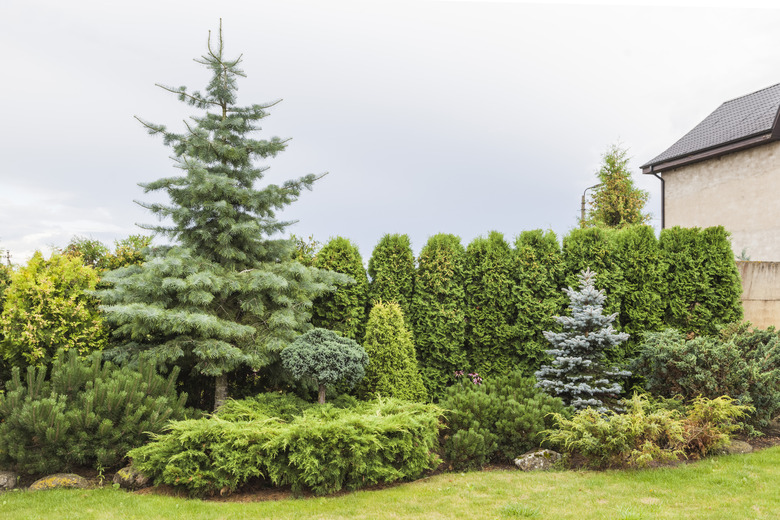Does Cutting The Top Off A Pine Tree Kill It?
We may receive a commission on purchases made from links.
Cutting the top off a pine tree (Pinus spp.) may not kill the tree, but a large pruning wound could leave the tree open to potentially deadly infections. Canopies of pine trees and many other evergreens grow outward from the needle-bearing tips of branches. Cutting back a branch to the bare wood inside the green canopy kills the branch, and cutting out a pine's top stops vertical growth unless new leaders form. It's possible for a topped tree to recover, but it may take years and some very careful pruning.
Tip
Cutting the top off a pine tree won't always kill the tree, but recovery takes years. The tree will be weakened by the trauma and may never look the same.
Avoiding Pine Tree Top Damage
Avoiding Pine Tree Top Damage
A pine tree with top damage may survive if most of the canopy escaped injury. Using a sharp, clean pruning tool to cut back the damage to just above healthy limbs could save the tree. If the first possible clean cut removes most of the crown and leaves large limbs exposed, the pine cannot recover its natural shape. Direct sunlight shines into the tree's center, so bark could sunburn and split, exposing the tree to more damage from disease and insects. If the damage only involves the very top of the pine, green growth near the trunk could gradually replace the top of the tree.
Encouraging Natural Recovery
Encouraging Natural Recovery
Once its top is cut off, a pine tree should start exerting a lot of energy to repair the damage. Small branches on either side of the broken leader should sprout new vertical shoots. Left for a few years, the multiple leaders will likely gain height but develop branches only on their sunny sides and compete for light and space. If not trimmed out, the crowded leaders could fail under a load of heavy snow or ice. Cutting out all but one maturing leader leaves a top with unbalanced foliage.
Early pruning prevents this unsightly growth. When new leaders reach only a few inches in height, cut out all but the strongest for the best chance of restoring the tree's natural pattern.
Creating New Leaders
Creating New Leaders
If damage extends too far down the tree to allow natural leader replacement, bending a small branch upwards forces a replacement for the tree's top. Limbs of an inch or less in diameter bend easily. An upright wooden brace fixed to the side of the trunk provides a vertical guide for lashing the new leader in place. Tied to the brace for two years, the limb permanently takes on the new position. The scar on the old top forms a weak point at the base of the new leader. Insect damage or fungal infection could make the repair short-lived.
Pruning Pine Tree Tops Correctly
Pruning Pine Tree Tops Correctly
When the top of a pine tree suffers major damage, the best solution involves removing the tree and planting a replacement. Topping pine trees growing too close to power lines creates oddly shaped trees with bushy upper growth.
Selecting a planting site that allows room for maximum growth without trimming gives pine trees the best chance for long life. In a good location, pine trees need little trimming. As the tree matures, lower limbs die back and require removal. Cutting out broken or diseased limbs improves the health and appearance of the tree, but pines develop beautiful symmetrical form without pruning.
